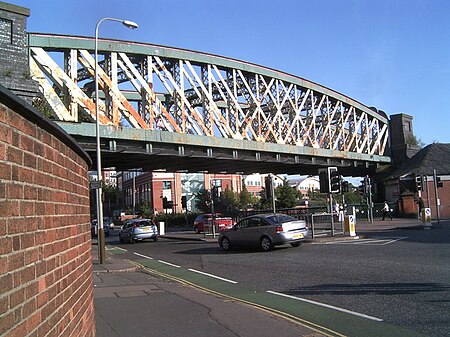Braunstone Gate Bridge
1899 establishments in EnglandBridges completed in 1899Bridges in LeicestershireBuildings and structures demolished in 2009Buildings and structures in Leicester ... and 5 more
Demolished bridges in EnglandFormer railway bridges in the United KingdomGreat Central RailwayRailway bridges in LeicestershireUse British English from February 2023

The Braunstone Gate Bridge (also known as the Bowstring Bridge) was a former railway bridge carrying the Great Central Railway, and later a public footpath and cycleway, over Western Boulevard and the River Soar in Leicester, England. The bridge had been in a poor state of repair following years of neglect by the local council and it was demolished to facilitate developments for De Montfort University. The Council claimed that the costs of restoration were prohibitive.
Excerpt from the Wikipedia article Braunstone Gate Bridge (License: CC BY-SA 3.0, Authors, Images).Braunstone Gate Bridge
Western Boulevard, Leicester Bede Island
Geographical coordinates (GPS) Address Nearby Places Show on map
Geographical coordinates (GPS)
| Latitude | Longitude |
|---|---|
| N 52.631722222222 ° | E -1.1440833333333 ° |
Address
Western Boulevard
Western Boulevard
LE3 5NQ Leicester, Bede Island
England, United Kingdom
Open on Google Maps



